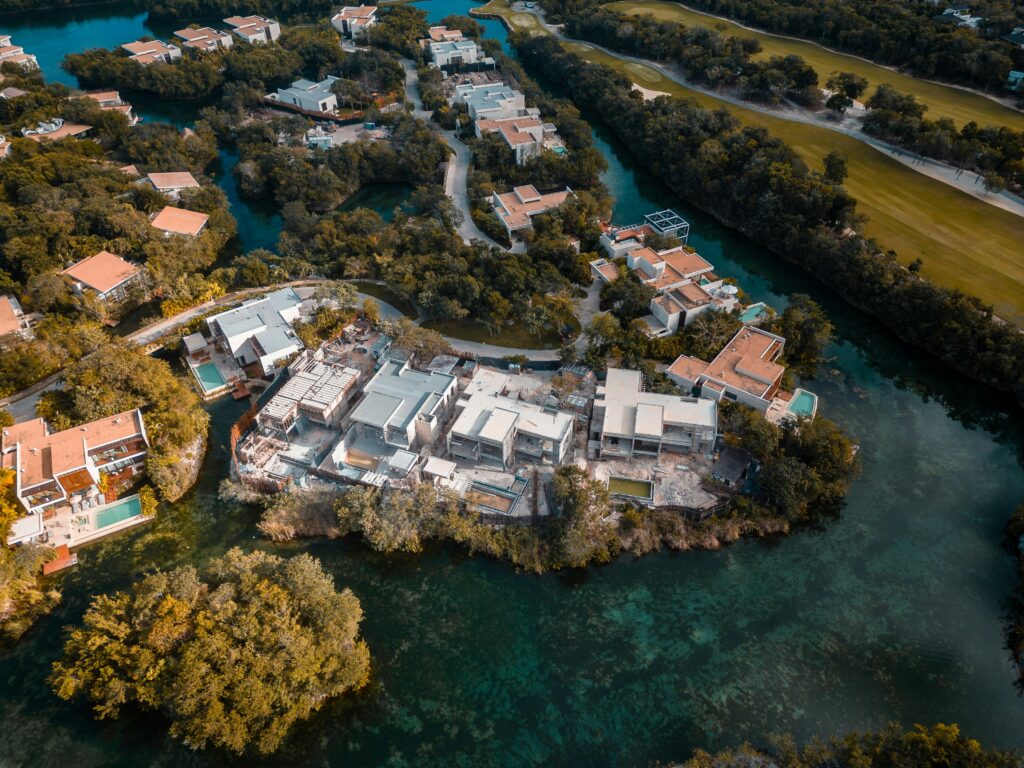

Introduction to Liveability
Liveability refers to the overall quality of life offered by a specific area, encompassing various factors that contribute to its desirability as a place to live. Determining the liveability of a location involves evaluating numerous criteria that align with personal and communal needs. Economic stability is a central component, as it influences job opportunities, income levels, and the affordability of housing. Areas marked by robust economies tend to provide residents with a sense of security and confidence in their future.
Access to quality education is another crucial factor influencing liveability. Areas that boast strong educational institutions—ranging from primary schools to universities—tend to attract families seeking to provide their children with better academic prospects. Additionally, educated populations often correlate with higher employment rates and contribute to the overall economic health of the community.
Healthcare services also play a significant role in liveability, as residents require access to medical facilities and professionals. High-quality healthcare systems enhance the overall well-being of the populace and add to the attractiveness of a location. In tandem with healthcare, safety is a paramount consideration; lower crime rates and a palpable sense of security contribute to peace of mind among residents, reinforcing their sense of belonging.
A well-structured infrastructure, including reliable public transportation, well-maintained roads, and community facilities, further enhances liveability. Efficient infrastructure can significantly influence daily commuting and accessibility to necessary amenities, thus impacting residents’ overall satisfaction with their environment.
Lastly, community engagement is essential for fostering a sense of belonging and connection among residents. Areas that encourage participation in local events and initiatives often experience higher levels of civic pride and cohesion. It is important to acknowledge that individual preferences vary; therefore, the significance of each factor may differ based on personal values and lifestyle choices. Understanding these multifaceted aspects of liveability allows individuals and families to make informed decisions regarding their ideal living environments.
Key Factors in Determining Liveability
When evaluating the liveability of various locations, several key factors come into play that can significantly influence residents’ quality of life. Understanding these elements can help individuals make informed decisions about where to settle down.
The cost of living is one of the primary considerations. It encompasses housing prices, food costs, transportation expenses, and other daily necessities. A high cost of living can strain finances, while a more affordable environment can offer a better standard of living. It is essential to strike a balance between income and expenses to ensure sustainable living.
Job opportunities are another critical factor. A thriving job market is indicative of a healthy economy, providing residents with the chance to advance their careers and attain financial stability. Locations with diverse industries often present more employment options, which can be especially beneficial for recent graduates or those seeking career changes.
Quality of education plays a crucial role for families with children or individuals pursuing further learning. Access to reputable schools, universities, and vocational training centers can significantly impact a community’s appeal. A location with a strong educational infrastructure not only benefits residents but also fosters future growth and development.
Healthcare systems should also be assessed when determining liveability. Access to quality medical facilities, health insurance options, and preventive care services are vital for ensuring a population’s overall well-being. Areas with robust healthcare services contribute to enhanced public health outcomes.
Safety and security are essential for promoting a sense of community and well-being. Lower crime rates and effective law enforcement create a secure environment for residents, thereby enhancing their overall quality of life. In addition, recreational activities such as parks, cultural events, and entertainment options provide further avenues for enjoyment and community engagement.
Lastly, environmental quality is increasingly recognized as a significant liveability factor. Clean air, water, and efficient waste management systems contribute to the overall health of a community. A balance between urban development and nature helps maintain an appealing and sustainable living environment.
Top Contenders: Cities with High Liveability Scores
When considering the best places to live, cities with high liveability scores consistently emerge as frontrunners. These scores take into account several factors, including stability, healthcare, culture, environment, education, and infrastructure. Three cities frequently highlighted in discussions surrounding top liveability are Vienna, Zurich, and Vancouver, each offering unique attributes that enhance residents’ quality of life.
Vienna, the capital of Austria, frequently ranks at the top of global liveability indexes. The city boasts a rich cultural history, with numerous museums, theaters, and concert halls that celebrate the arts, making it a hub for creativity and cultural engagement. Additionally, Vienna’s public transport system is renowned for its efficiency and coverage, allowing residents easy access to various parts of the city. The abundance of parks and green spaces, such as the famous Prater and Schönbrunn Gardens, contributes to a balanced urban life, providing residents with areas for recreation and relaxation.
Zurich, Switzerland’s largest city, is another exceptional contender recognized for its high standard of living. The city is distinguished by its cleanliness and safety, which promote a peaceful atmosphere. Zurich is also a financial powerhouse, offering excellent employment opportunities especially in banking and technology sectors. Its public transport network is extensive and reliable, connecting residents seamlessly to various neighborhoods. Furthermore, the proximity to nature, with lakes and mountains nearby, enhances the urban experience, allowing residents recreational access to natural beauty.
Vancouver, situated on the west coast of Canada, is celebrated for its stunning natural surroundings, including mountains and the Pacific Ocean. The city embraces a multicultural ethos that enriches its social fabric, exemplified by diverse cultural festivals and an array of international cuisines. Vancouver’s commitment to sustainability is evident through its comprehensive public transport systems and extensive green spaces, like Stanley Park, promoting eco-friendly urban living. These features collectively contribute to Vancouver’s status as one of the top places to reside in the world.
Emerging Destinations: Up-and-Coming Cities
In recent years, several emerging cities have gained attention for their impressive liveability, despite not being as widely recognized as traditional urban centers. These cities exhibit substantial potential for growth and offer a unique blend of economic opportunities, evolving infrastructure, and appealing lifestyle options. For instance, cities in Eastern Europe and Southeast Asia have begun to attract both expatriates and locals searching for better living conditions.
One such city is Tbilisi, the capital of Georgia. Tbilisi has undergone a remarkable transformation, offering a vibrant cultural scene, affordable housing, and efficient public transport. Its strategic location at the crossroads of Europe and Asia facilitates trade and tourism, further boosting its economy. Moreover, the local government has embraced initiatives to enhance the quality of life, such as developing green spaces and promoting sustainable practices.
Another noteworthy mention is the city of Ho Chi Minh City in Vietnam. This bustling metropolis has experienced rapid economic growth, driven by a young workforce and increasing foreign investment. The city boasts a rich history, a booming culinary scene, and increasingly modern infrastructure. Recent improvements in public transport, including a metro system currently under construction, are expected to make commuting more efficient and elevate the city’s overall livability.
Similarly, the city of Krakow in Poland is receiving recognition for its blend of historical charm and modern conveniences. Renowned for its rich cultural heritage, Krakow is also witnessing major investments in infrastructure and technology sectors. This focus has made it a burgeoning hub for digital startups, attracting talented professionals and contributing to a dynamic economy.
As these emerging cities continue to develop and innovate, they present intriguing opportunities for individuals and families looking for a high quality of life in less conventional locations. With improvements in various sectors, they are well on their way to becoming favorable alternatives to more established urban areas.
Comparing Urban vs. Rural Liveability
The debate between urban and rural livability continues to be a prevailing topic as individuals assess their ideal living conditions. Urban areas, with their bustling environments, are often associated with numerous advantages. Primarily, cities provide an abundance of amenities including shopping centers, restaurants, entertainment venues, and diverse job opportunities. This accessibility can significantly enhance one’s lifestyle, making it convenient for residents to engage in various activities and professional pursuits. Additionally, urban regions typically feature advanced public transportation systems, facilitating easy movement without reliance on personal vehicles.
However, the benefits of urban living come at a cost. The challenges of high population density often lead to increased living expenses, traffic congestion, and elevated stress levels. Noise and pollution are also prominent concerns that may affect the well-being of residents. Furthermore, while urban settings may provide an array of social activities, the transient nature of city life can sometimes hinder deep community connections, potentially resulting in feelings of isolation.
In contrast, rural areas often epitomize tranquility and a slower pace of life. The natural landscapes offer residents a respite from the fast-paced urban lifestyle, often resulting in better mental health outcomes. Living in rural settings typically promotes a stronger sense of community, where neighbors are more likely to know each other personally and engage in communal activities. Additionally, the cost of living in rural areas is generally lower, allowing residents to enjoy spacious homes and larger properties.
Nevertheless, rural living may come with its own set of challenges. Limited access to amenities and services can be a significant drawback, as residents might need to travel long distances for necessities such as healthcare, education, and entertainment. Job opportunities may also be less abundant, driving some individuals to consider their professional aspirations more critically when choosing between urban and rural environments. Ultimately, the decision on where to live should reflect personal preferences and lifestyle priorities, balancing the advantages and disadvantages of each area.
Quality of Life: Interviews and Testimonials
In various high livability areas across the globe, individuals have had diverse yet remarkably enriching experiences. Such testimonials provide unique insights into everyday life, emphasizing what makes these regions desirable places to live. For instance, Sarah, a marketing manager residing in Copenhagen, Denmark, communicates an overwhelming sense of satisfaction with her life there. “I love the work-life balance here. The culture promotes biking and being outdoors, which allows me to spend ample time with my family while also advancing my career,” she shares. This emphasis on balance highlights one of the key elements contributing to a high quality of life in such cities.
Similarly, John, a software engineer living in Melbourne, Australia, notes, “The vibrant community and access to parks are what draw me to this city. After a hectic workday, I can unwind at the beach or enjoy dinner with friends, all while knowing my children are in excellent schools nearby.” His mention of community engagement and educational quality showcases significant factors that enhance life satisfaction for families considering relocation to livable areas.
Another perspective comes from Maria, a healthcare professional living in Zurich, Switzerland. She points out, “The public transportation system is unparalleled, making it easy to explore the city and surrounding areas without the need for a car. This accessibility also fosters opportunities for leisure and family activities.” Her testimony emphasizes how efficient infrastructure can significantly contribute to the quality of everyday life.
Collectively, these personal stories illustrate the multifaceted aspects of life in cities renowned for their livability. From work-life balance and community involvement to outstanding public services, individuals living in these areas are not only enjoying their lives but are also deriving profound satisfaction from their surroundings. This interplay of work, leisure, and family life serves as a testament to the influences that high livability ratings can have on personal happiness and fulfillment.
Cost of Living vs. Liveability: Finding a Balance
When considering a move to an ideal location, individuals often face the crucial decision of balancing cost of living with overall liveability. Liveability encompasses various factors including safety, education, healthcare, and recreational opportunities, while the cost of living typically refers to the expenses related to housing, transportation, and basic goods and services. Individuals seeking to relocate must therefore carefully assess how these two elements interact within any given area.
The affordability of a region can significantly impact an individual’s quality of life. A higher cost of living may be justified in areas with robust economic opportunities and amenities, yet it can also pose challenges for those on a fixed budget. Housing market trends are vital in this analysis; regions experiencing an upward trajectory in property prices may reflect increased desirability but can simultaneously render them unaffordable for some residents. For example, urban centers often have a vibrant job market and a plethora of cultural offerings, yet these come at a premium price, compelling individuals to make sacrifices in other expenditure areas.
In contrast, regions with lower living costs may offer a more affordable lifestyle but can lack essential services or job opportunities, thus affecting overall satisfaction. Therefore, prioritizing needs becomes essential; individuals must determine what sacrifices they are willing to make. Would one prefer to live in a bustling city with a higher rent or opt for a suburban area with significantly lower housing costs but fewer job prospects? Such decisions should be made thoughtfully, considering long-term implications on both financial health and personal happiness.
Ultimately, aspiring residents must evaluate how much they value specific aspects of liveability in comparison to the cost they are willing to bear. By conducting thorough research and introspective assessments, individuals can identify regions that align closely with their unique priorities, achieving a sustainable balance between cost of living and overall satisfaction.
Factors to Consider When Relocating
Relocating to a new area can be an invigorating yet challenging endeavor. To ensure a successful transition, it is vital to consider a multitude of factors that will affect both your personal and family life. One of the first steps in this process is conducting thorough research about potential locations. Various resources, such as online forums, local government websites, and social media groups dedicated to prospective movers, can provide valuable insights into the daily realities of living in a new community.
Visiting potential areas before making a permanent move is an essential part of determining if the location aligns with your lifestyle and needs. Plan visits to different neighborhoods, explore nearby amenities, and assess the public transportation system if it is a priority for you. Engaging with residents during your visit can also provide anecdotal evidence that can significantly influence your decision. Pay attention not just to the physical environment but also to the culture and social dynamics of the community.
Moreover, assessing personal and family needs is crucial for a seamless transition. Factors such as job opportunities, educational institutions, healthcare facilities, and social support systems should be thoroughly reviewed. Analyze your priorities—whether they lean towards urban conveniences or rural tranquility—and take time to evaluate how these aspects would positively or negatively impact your family life. Ultimately, successful relocation involves a combination of diligent research, personal visits, and thoughtful consideration of your specific circumstances. By taking these steps, you can minimize the challenges that often accompany the moving process, ensuring a smoother transition into your new home.
Conclusion: Making the Right Choice for You
As we navigate through the vast options of regions and cities available worldwide, it becomes crucial to distill a clear understanding of what aligns best with our individual values and needs. The earlier sections of this guide explored various top areas to live, presenting their unique characteristics, from thriving job markets and cultural richness to quality of life and affordability. This diversity highlights that no single location can universally cater to everyone’s desires. Instead, the ideal city for one person may differ significantly for another, influenced by personal aspirations, career ambitions, and lifestyle preferences.
Ultimately, the choice of a place to live should resonate deeply with one’s life goals. For instance, individuals seeking a bustling urban environment rich in career opportunities might gravitate towards major metropolitan areas. Conversely, those desiring a quieter, more nature-centric lifestyle may find fulfillment in smaller towns or rural settings. It is essential to carefully assess how various attributes of a location align with your personal criteria, such as educational facilities, healthcare services, recreational options, and community engagement.
Moreover, it is advisable to consider factors such as climate, culture, and available amenities while evaluating potential new homes. Understanding how these elements contribute to overall happiness and life satisfaction can guide the decision-making process. Taking the time to reflect on these aspects can result in a more deliberate choice that will foster contentment in your environment.
In summary, choosing a place to live is a significant decision that should be approached thoughtfully. By considering the insights shared in this comprehensive guide, readers are encouraged to engage in a thorough evaluation of their own values, needs, and aspirations, ensuring that they find the area that truly complements their lifestyle and future ambitions.
RELATED POSTS
View all



